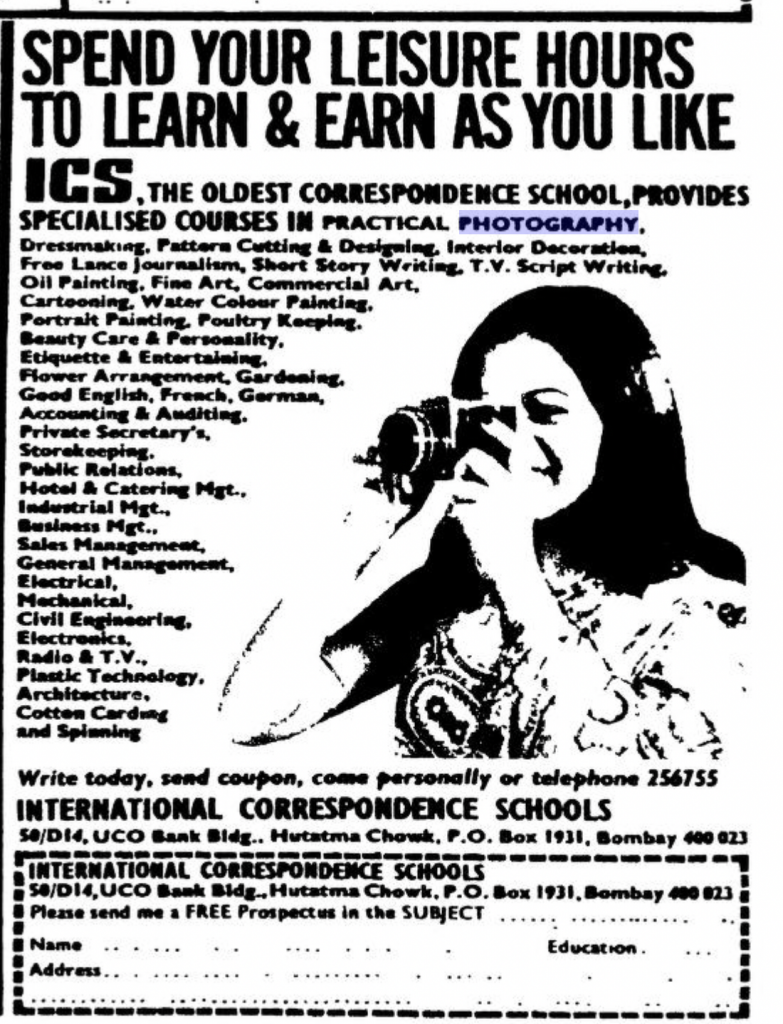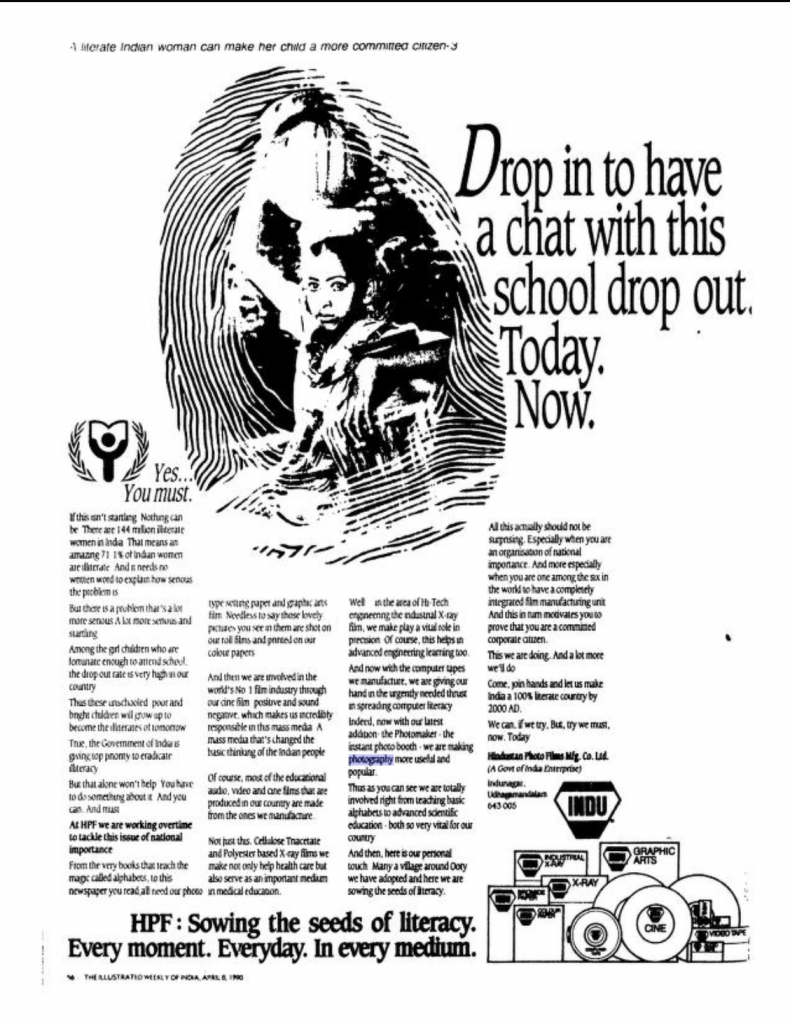A study of the advertisements in the Illustrated Weekly of India

As a significant magazine within India’s print history, and due to its noteworthy contributions to the popularity of photography, the Illustrated Weekly of India (from now, the Weekly), forms an important part of this research on photography periodicals. Over the years, the magazine initiated dedicated columns as well as competitions for the advancement of amateur photography, but also by creating a formal space for genres such as photojournalism, supported and encouraged the work of professional photographers. Thus the magazine’s history has also been a reliable document of the evolution of photography as a popular art form.
Not just through the images that were featured, but also through advertisements, we gain a fair insight into the consumption and popularity of photography at a given time. This week, I look at a series of issues of the Weekly from the 70s and the 80s, which focus on a new kind of photo-practitioner, the amateur female photographer. This is one part of a series, where I shall be looking at the several roles of women and their photographic histories within the printed magazine. By now, amateur photography was a widely popular practice, evidenced through advertisements of camera companies like Kodak leaning into the snapshot, or the family photograph, as the most common use of their cameras. But the emphasis on photography as a hobby that could easily be taken up by women was emphasized heavily during this period.

It was evident that a DIY culture with photography was already prevalent starting in the 1940s, with magazines such as the Camera in the Tropics and the Kodak Indian Magazine, that frequently featured columns advising amateur photographers on how to make better pictures, or descriptions of award-winning pictures and their process, so that readers might learn it and replicate. Similarly the Weekly featured such columns too, under the titles such as Teach Yourself Photography, but by the 70s also supplemented it with longer pieces, such as the recurring column The Third Eye, which spotlighted amateur photographers by featuring images and a write-up about their practice.
In an issue from April 1973, in the Teach Yourself Photography column photographer Gurmeet Singh makes an appeal, “Incidentally, girls, why don’t you take up photography more seriously? There may be a great future for you?” This targeted address towards women hints at there having been a paucity of female participation until then, that was being addressed for the first time.

A frequently occurring advertisement, from the International Correspondence Schools (ICS) in Bombay, further this trend. Offering correspondence courses in Interior decoration, dressmaking, beauty and grooming, practical photography was an offering that was frequently highlighted in the advertisements. While the ads, except for a few, never specified the gender of applicants they were addressing, it is quite clear that they were focussed on urban females as potential students. Occasionally featuring illustrations of women, this transformation of photography from an elite scientific engagement, to a widely popular hobby with the potential for also being financially lucrative, is a notable one. Yet another advertisement from Tamilnadu, of the Kaliamthi Nilam, offering courses in photography, colour photography and screenprinting hint at the presence of several such centres across the country.

The emphasis on the woman amateur photographer as a new audience is further evident in this advertisement from 1976. Femina, a widely read women’s magazine started in 1959, advertised a unique calendar offered as a part of its New Year’s issue, featuring a detailed step-by-step guide to photography. This was the first hobby for which this content had been designed. This diverse range of advertisements definitely provide a glimpse into this new kind of consumer for photography, but this is a much longer history that can be tracked through the history of the magazine, leading up to the present.

